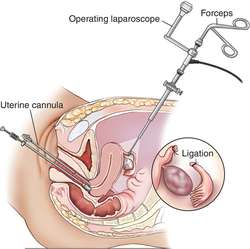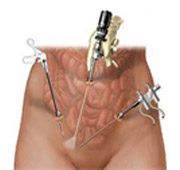M yomectomy also known as fibroidectomy refers to the surgical removal of uterine leiomyomas, also known as uterine fibroids, which are smooth muscle tumors of the uterus.
Mostly women have no symptoms while others may have painful or heavy periods. They may also cause pain or lower back pain during sex.
A woman can have one uterine fibroid or many. Sometimes, fibroids may make it difficult to become pregnant, although this is uncommon.
In contrast to hysterectomy the uterus remains preserved and the woman keeps her reproductive potential.
A myomectomy can be performed in a number of ways, depending on the location and number of lesions, which means an injury to living tissue.The exact cause of uterine fibroids is still unclear till present.
Myomectomy is a surgery to remove one or more fibroids. It is usually recommended when other conservative treatment options fail for women who wants fertility preserving surgery or who want to retain the uterus.
The presence of a fibroid does not mean that it needs to be removed. Removal of fibroid is necessary when the fibroid causes pain or pressure, abnormal bleeding, or interferes with reproduction.
The fibroids that needs to be removed are typically large in size, or growing at certain locations such as bulging into the endometrial cavity causing significant cavity distortion.
P atients have many options in the management of uterine fibroids, including: observation, medical therapy , hysterectomy, uterine artery embolization, and high-intensity focused ultrasound ablation. Despite these many options, the surgical approach of selected fibroid removal remains an important choice for those women who want or need to preserve the uterus.

Types of myomectomy

Hysteroscopic

Laparoscopic

Laparotomic
Symptoms of Myomectomy
- Heavy menstrual bleeding
- Menstrual periods lasting more than a week
- Pelvic pressure or pain
- Frequent urination
- Difficulty emptying the bladder
- Constipation
- Backache or leg pains
Causes of Myomectomy
D octors don't know the defined causes of uterine fibroids, but research and clinical experience point to these factors:
Risk Factors
When to consult a doctor for treatment
You need to consult your doctor if you face any of the following issues:
- Chronic pelvic pain
- Overly heavy, prolonged or painful periods
- Spotting or bleeding between periods
- Difficulty emptying your bladder
Treatment
There's no single best approach to uterine fibroid treatment. But still the treatments which can be taken into consideration incldes:-
Watchful waiting
Many women with uterine fibroids experience no signs or symptoms, or only annoying signs and symptoms that they can live with. If that's the case for you, watchful waiting could be the best option.
Fibroids aren't cancerous. They rarely interfere with pregnancy. They usually grow slowly or not at all and tend to shrink after menopause, when levels of reproductive hormones drop.
Medications
Medications for uterine fibroids target hormones that regulate your menstrual cycle, treating symptoms such as heavy menstrual bleeding and pelvic pressure. They don't eliminate fibroids, but may shrink them. Medications include:
- Gonadotropin-releasing hormone (Gn-RH) agonists
- Progestin-releasing intrauterine device (IUD)
- Tranexamic acid (Lysteda)
- Other medications
Myomectomy needs to be taken into consideration as a treatment by females if and only if tgey are facing severe symptoms. Otherwise watching and waiting is the best option as this does not have any adverse effect on the health of females who are suffering from this.

 WhatsApp us
WhatsApp us